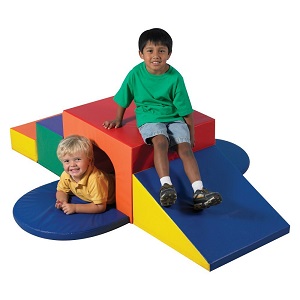Many people are interested in taking pictures but are unsure if they have the skills to become really good at it. It’s up to you to take the time to gather as much knowledge as possible, giving yourself the tools you need to take amazing photographs time and time again. These tips can help you improve your picture taking skills.
Snap your photographs quickly and instinctively. Especially if you are taking pictures of babies, toddlers or pets. The longer it takes to shoot the picture, the greater the chance of something going amiss. Your subject could move, go away or something else such as lighting can affect the shot you wanted to take. It is better if you can take shots quickly.
Avoid Capturing the Sky
When shooting pictures on an overcast day, avoid capturing the sky in the image. Having too much gray sky can make your shots appear washed-out and muted. If you cannot avoid capturing an overcast sky in your shot, opt for black and white rather than color photos. Blue skies look magnificent in photographs; however, you will still need to take light into consideration.
You should create depth and perspective when photographing landscapes. Have a person or an object in the foreground to provide an idea of scale for your image. Changing the setting for your aperture can give your picture the appearance of high resolution.
Many photographers ignore the foreground in their shots focusing on the background, but the viewer sees the foreground. You can maximize the appearance of depth and create a more vivid frame by composing the foreground to make these things happen.
Having people in your pictures can add authenticity, perspective and interest. Make sure to always get their permission, though. The pictures can become great memories of the places you’ve been or people you’ve seen. They will make excellent companions during a travel and can transport you to a unique moment preserved in time. Aim for shots of casual candidness.
Built In Flash vs. External Flash
A lot of cameras that are digital contain built in flashes that automatically turn on when the lighting is dim. These are great for a quick snapshot, but if you want to take your photos to the next level, consider a professional external flash unit to provide a better range of lighting options. Check to make sure your camera has a “hot shoe” on top that will accommodate an external flash, then go to a professional camera store to ensure that you are getting one that automatically syncs with your camera.
Whether you want to take up photography as a hobby or simply learn how to improve your photographs, you can benefit by educating yourself on the elements of composition. Bad composition can turn an otherwise-great shot into something that doesn’t seem quite right. For better shots, practice different ways of composing your photos.
When you are taking photos, remember that sometimes less is more. Why would you want to clutter your shots? When you keep your backdrop and props simple, your subject has an opportunity to shine.
Many tasks call for us to place things evenly and symmetrically for best results. To create photographs that are more interesting, try aiming your camera so that your subject is slightly off center. To create asymmetry, you may need to disable your camera’s auto-focus feature, because it always uses the lens’ center as focal point. Adjust your auto-focus settings in your camera before taking your photograph, to ensure that your picture will be focused on what you intend it to be.
When you first arrive for a wedding photography job, you can warm up by looking for poignant, unplanned vignettes: a fresh centerpiece, an abandoned purse, a jacket thrown over a chair. This could be the occasion to take some great pictures.
Before making travel plans, have a list handy of places you’d like to see and ideas you’d like to photograph. To find great ideas and inspiration, just take a look at a rack of different post cards. Local subjects and attractions featured on postcards are likely memorable and distinctive enough to be worth your photographic attention.
Never underestimate the advantages of natural light in your photo compositions. You will not want the glare of the sun, so choose outdoor lighting that is lower, either first thing in the morning or after the sun has dropped in the afternoons. When the sun is at its highest, it can cast unwanted shadows, and your subject could end up squinting due to the strong light. If you do use sunlight, position your photo so that the sun is hitting the subject from the side.
Implement these ideas into every one of your photography sessions and you will soon see them improving. These tips are only useful if you actually go out and practice them.
Additional Selections of Indoor Climbing Toys for Babies and Toddlers, Child Climbing Toys


